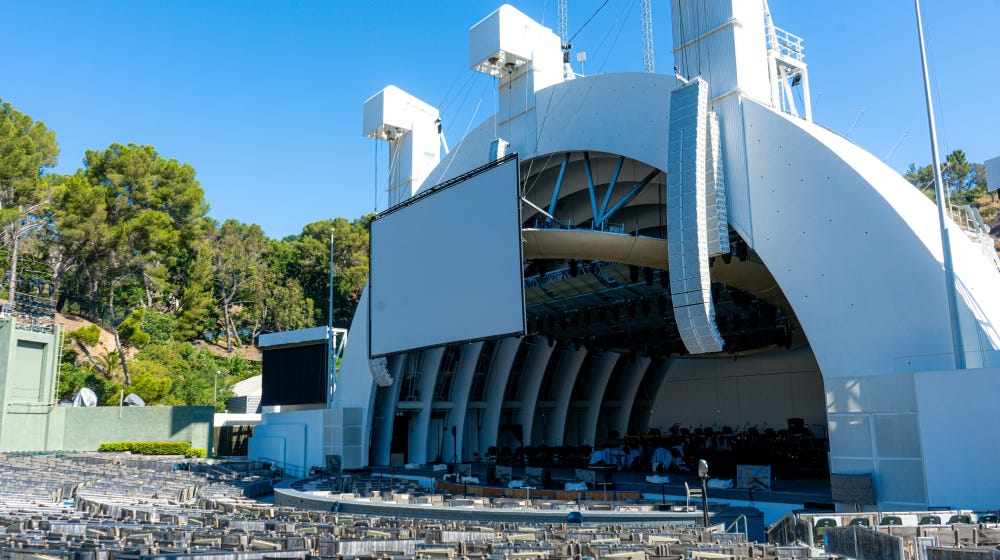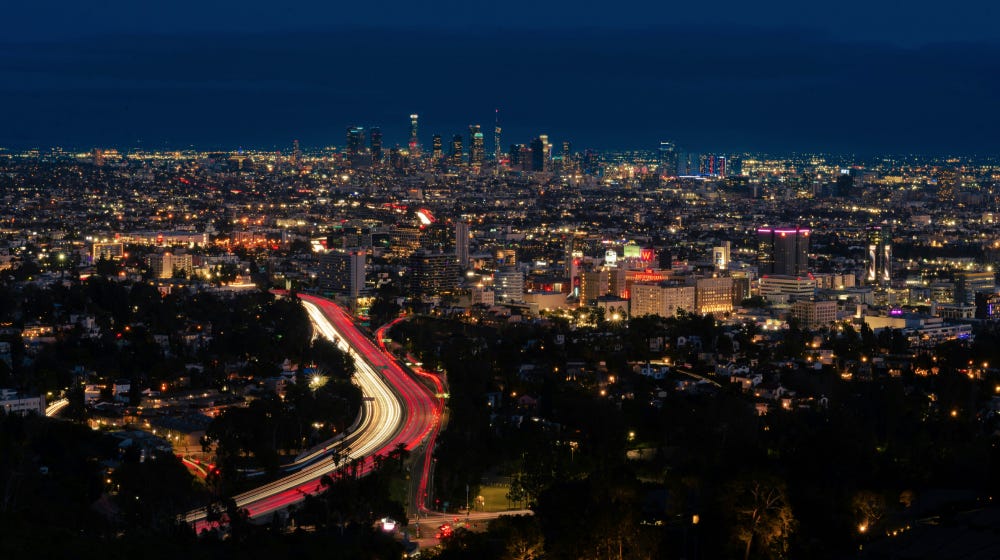What can the redesign of one of Los Angeles' most famous event venues tell us about the '28 Olympics?
Mobility Perspective by Joshua Schank, Partner, InfraStrategies; Senior Fellow, Institute for Transportation Studies, UCLA
Welcome to CoMotion NEWS, your weekly roundup of news and analysis of the mobility revolution. If this email was forwarded, you can sign up here for NEWS.
Working to improve transportation can be challenging because so often we begin working on a solution before we have sufficiently defined the problem. Defining the problem is not as simple as we might assume. When it comes to traveling to a large event, something that is on the mind of Angelenos as we begin to prepare for the Olympics, agreement on the problem is critical.
Is Congestion the Problem?
InfraStrategies, the consulting firm where I am a partner, has been working in partnership with Cambridge Systematics to improve Hollywood Bowl’s transportation concerns for the last year. But how exactly did we define the problem? Previously, it had often been defined as one of traffic congestion. This is understandable given that the traffic situation to and from the Bowl is indeed challenging, and that the traffic was having undesirable impacts on the local neighborhoods.
However, this definition of the problem led to solutions that, not surprisingly, attempted to improve the flow of traffic. There were suggestions for new turning lanes, different traffic flows, street closures and even new parking structures. The LA Philharmonic Association, who manages the Hollywood Bowl in partnership with the County Department of Parks & Recreation reached out to us in part because these previous efforts had only partially mitigated the problem. The congestion was still there. They hoped that perhaps a more innovative perspective on the issue might yield better results.
So, what is the Problem?
We began our work by redefining the problem. We knew it had to be redefined because solving “traffic congestion” would be virtually impossible. The Bowl is a 17,500-seat venue located on a major thoroughfare (Highland Avenue) and has only one direct vehicle access point. When that many people arrive by car at one place in a short period of time, often during rush hour, there is going to be congestion. But when we looked at the data, we saw that most people going to the Bowl are not driving and parking there. In fact, there are only about 1,350 publicly available parking spaces (using stacked parking – meaning you cannot leave with your vehicle until those around you leave). Most patrons were getting to the Bowl property either by walking or using the Bowl’s extensive bus network.
This suggested that to best serve its customers, it would make more sense for the Bowl to focus on the overall transportation experience, rather than traffic congestion, as their goal. Also, given that the community was concerned with their experience, and they too are customers, they would need to be included in this goal.
Our observations of live events showed that there were several pain points for customers accessing and leaving the Bowl, and most of them were caused by conflicts between pedestrians, buses, and cars. We also confirmed that cars are a highly inefficient means by which to access venues. Based on our counts, in the same time it took 100 pedestrians to get through a signal, only 10-15 cars could get through. Same thing with buses – one bus was far more efficient in moving people in and out of the Bowl than cars. This meant that anyone parking or using rideshare was taking up inordinate space in a space-constrained environment.
Ok so what about Solutions?
With the problem redefined, we were able to work with the LA Phil to come up with some innovative, and sometimes counterintuitive, solutions. Anything we could do to reduce the number of conflicts between people/buses and cars would be a benefit to customer experience. One effective way to do this would be to reduce the number of cars and increase the number of people on buses or walking.
This led us to a variety of improvements:
Better communications with customers. Many customers at Bowl events have not been to the Bowl before and therefore do not fully understand their transportation options. Improving the customer experience means being transparent about these options with customers before events so that customers can make informed decisions. We worked with the LA Phil to better explain the challenges of rideshare to its customers, discourage parking, and make clear that using the bus is the easiest option. We also developed a partnership with LA Metro to make it seamless for transit riders to use Bowl shuttle buses.
Meetings with the community. Although the pandemic had pushed community meetings with the LA Phil online, we had an opportunity to attend and explain our plans. When the meetings returned to in-person we were further able to have more in-depth conversations, explain what we were doing and how we expected it to help. As a result, the community felt more invested and provided positive feedback regarding the changes.
Relocating shuttle buses and rideshare. We observed that the rideshare drop-off area – in Lot B – was creating numerous conflicts with pedestrians and buses. After speaking with the rideshare companies, they also saw an opportunity to improve their customer’s experiences by moving pickup and drop-off across the street to Lot C. This change not only reduced the time it takes for people to use rideshare to exit the Bowl, but also eliminated rideshare conflicts with buses and pedestrians. It opened up new space in Lot B to use for buses that allowed for easier loading at the end of the night along with clearer signage. In conjunction with robust LA Phil marketing around using the Bowl’s transit system to get to the Bowl bus usage has increased as the experience has improved.
Increased parking rates and reduced parking spaces. The most un-LA idea we proposed was to increase parking rates. By moving the buses into Lot B, it also eliminated some parking spaces. While there was concern about a backlash from this idea, there has been minimal feedback. Underpricing parking had been making driving to the Bowl an attractive option but was increasing the congestion problem. Those who chose to drive and park were making everyone else’s experience worse. Now there are fewer people driving to the Bowl and that space is used far more efficiently to better manage buses.
What did we learn?
While we expected a negative reaction to all these changes, because change is hard, the result has been the opposite. By moving rideshare into its own dedicated lot, rideshare wait times, and the entire rideshare experience, have been substantially improved. The experience for most bus riders has been made much easier too. Pedestrian traffic flows substantially better. There is still plenty of traffic and congestion, but the impact on the community has been reduced due to the rideshare relocation, and the buses provide an excellent alternative to dealing with that traffic. We’re still awaiting formal data, but customers and neighbors report a better experience getting to and from the Bowl.
The results for the Hollywood Bowl suggest that there is a better way to think about venue access in Los Angeles, especially as we anticipate the Olympics. Instead of maximizing road capacity and parking spaces, if customer experience is the goal, venues should focus on providing better alternatives to driving and parking and showing customers how easy they can be. There is a prevailing myth in Los Angeles that people are addicted to their cars and will not use anything else. This myth can easily be dispelled when good alternatives to driving are provided, and parking reflects the true costs it imposes. But getting this done requires agreeing first on the problem you want to solve.
Mobility perspective by:
Joshua Schank, Partner, InfraStrategies; Senior Fellow, Institute for Transportation Studies, UCLA
Get the latest insights on advanced aerial mobility at the 8th edition of CoMotion LA on Nov. 13-14, and the OMF Summit on Nov. 12 - exploring multimodal, decarbonized mobility and the latest advancements in mobility-focused data and digital tools like the Mobility Data Specification and Curb Data Specification.
Get your pass to the most important new mobility gathering of the year. Register now and save 30% off.
YouTube | LinkedIn | Podcast | X






